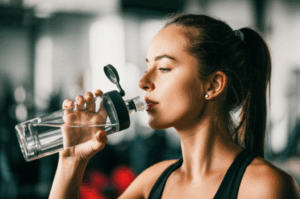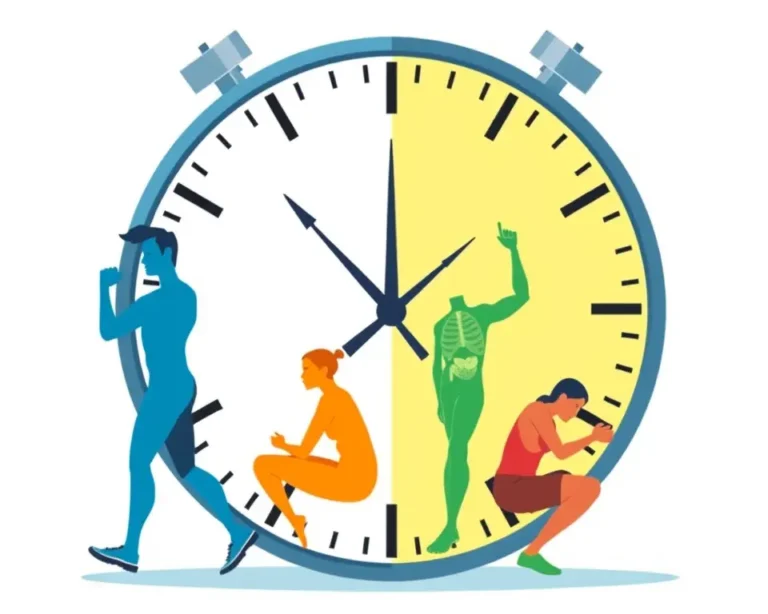In today’s health-conscious world, many people explore different strategies to achieve their wellness goals. Two popular approaches are limited eating, often in the form of intermittent fasting, and regular exercise. Combining these two can be a powerful tool, but it’s important to understand how they interact to maximize benefits and minimize potential risks. This article explores the science behind limited eating and regular exercise, providing practical advice on how to integrate them into your lifestyle for optimal results.
Understanding Limited Eating: More Than Just a Diet
Limited eating encompasses various dietary patterns that involve restricting when you eat, rather than focusing solely on what you eat. Intermittent fasting (IF) is perhaps the most well-known form of limited eating, and it comes in several variations:
- Time-Restricted Eating (TRE): This involves eating within a specific window of time each day, such as 8 hours, and fasting for the remaining 16 hours (16:8 method).
- Alternate-Day Fasting (ADF): This involves alternating between days of normal eating and days of severe calorie restriction (around 500 calories) or complete fasting.
- 5:2 Diet: This involves eating normally for 5 days of the week and restricting calorie intake to 500-600 calories on the other 2 non-consecutive days.
How Limited Eating Works
The primary mechanism behind limited eating is its impact on calorie intake. By restricting the eating window, many people naturally consume fewer calories, leading to weight loss. However, the benefits extend beyond simple calorie restriction. Limited eating can also influence:
- Hormone Optimization: Fasting can increase growth hormone levels and improve insulin sensitivity, which are key to staying youthful and lean.
- Metabolic Rate: Caloric restriction may lower the metabolic rate and enhance energy production.
- Cellular Repair: Intermittent fasting may improve the autophagy process, a cellular cleaning process that removes damaged cells.
Benefits of Limited Eating
Research suggests that limited eating can offer several potential health benefits:
- Weight Loss: By creating a calorie deficit, limited eating can be an effective tool for weight management.
- Improved Insulin Sensitivity: This can reduce the risk of type 2 diabetes.
- Reduced Risk of Chronic Diseases: Studies suggest that limited eating may lower the risk of heart disease and certain cancers.
- Enhanced Brain Health: Exercise can help the brain health and memory.
- Improved Metabolic Health: Caloric restriction has been shown to lower insulin, blood glucose levels, and vascular inflammation, as well as enhance insulin sensitivity.
The Power of Regular Exercise: Fueling Your Body and Mind
Regular exercise is a cornerstone of good health, offering a wide range of physical and mental benefits. Exercise can be broadly categorized into:
- Cardiovascular Exercise: Activities like running, swimming, and cycling that elevate heart rate and improve cardiovascular health.
- Strength Training: Activities like weightlifting and bodyweight exercises that build muscle mass and strength.
- Flexibility and Balance Exercises: Activities like yoga and Pilates that improve flexibility, balance, and coordination.
How Regular Exercise Works
Exercise impacts the body in numerous ways:
- Increased Energy Expenditure: Exercise burns calories, contributing to weight management.
- Improved Cardiovascular Health: Exercise strengthens the heart and improves circulation.
- Muscle and Bone Strength: Exercise builds and maintains strong muscles and bones.
- Hormone Regulation: Physical activity stimulates brain chemicals that may leave you feeling happier, more relaxed and less anxious.
- Reduced Disease Risk: Regular exercise reduces the risk of heart disease, diabetes, cancer, and other health problems.
Benefits of Regular Exercise
The benefits of regular exercise are well-documented:
- Weight Management: Exercise helps burn calories and build muscle mass.
- Reduced Risk of Chronic Diseases: Exercise can prevent or manage many health problems and concerns, including heart disease, stroke, type 2 diabetes, and certain cancers.
- Improved Mood and Mental Health: Physical activity stimulates brain chemicals that may leave you feeling happier, more relaxed and less anxious.
- Increased Energy Levels: Regular physical activity can improve your muscle strength and boost your endurance.
- Better Sleep: Regular physical activity can help you fall asleep faster, get better sleep and deepen your sleep.
Combining Limited Eating and Regular Exercise: A Synergistic Approach
When limited eating and regular exercise are combined thoughtfully, they can create a synergistic effect, amplifying the benefits of each.
Potential Benefits of Combining Limited Eating and Regular Exercise
- Enhanced Weight Loss: Combining these elements can maximize calorie burning and fat loss.
- Improved Body Composition: Exercise during limited eating can shift weight loss from muscle mass to fat mass.
- Cardiometabolic Health: Combining time-restricted eating and high intensity exercise may improve cardiometabolic health.
- Increased Muscle Mass: Exercise combined with diet-induced weight loss can improve muscle in terms of mass, strength, and aerobic capacity.
Considerations for Combining Limited Eating and Regular Exercise
While combining limited eating and regular exercise can be beneficial, it’s important to consider the following:
- Energy Levels: Be mindful of your energy levels, especially when starting a new limited eating or exercise regimen.
- Nutrient Timing: Consume a meal close to your moderate- to high-intensity workout.
- Hydration: Drink lots of water and calorie-free drinks, such as herbal teas, throughout the day.
- Electrolytes: A good low calorie hydration source is coconut water.
- Intensity and Duration: Keep the intensity and duration fairly low.
- Type of Fast: If you’re doing a 24-hour intermittent fast, stick to low-intensity workouts.
Practical Tips for Integrating Limited Eating and Regular Exercise
Here are some practical tips for safely and effectively integrating limited eating and regular exercise into your lifestyle:
- Choose the Right Limited Eating Approach: Select a limited eating method that fits your lifestyle and preferences. The 16:8 method is a popular choice for beginners due to its flexibility.
- Plan Your Workouts: Schedule your workouts strategically around your eating window. For example, you might prefer to exercise before breaking your fast or after a meal.
- Start Slowly: Gradually increase the intensity and duration of your workouts as your body adapts.
- Prioritize Nutrition: Even within your eating window, focus on consuming nutrient-dense foods that provide essential vitamins, minerals, and macronutrients.
- Stay Hydrated: Drink plenty of water throughout the day, especially before, during, and after exercise.
- Listen to Your Body: Pay attention to your body’s signals and adjust your eating and exercise plan as needed. If you feel dizzy, weak, or overly fatigued, stop and eat something.
- Consider the Type of Exercise: Low to moderate-intensity cardiovascular exercise can be beneficial during fasting periods. Strength training while intermittent fasting can help preserve muscle mass and boost metabolism.
Sample Schedules
Here are a few sample schedules to illustrate how you might integrate limited eating and regular exercise:
Schedule 1: Morning Workout
- 7:00 AM: Wake up and do a moderate-intensity cardio workout (e.g., running, cycling).
- 8:00 AM – 4:00 PM: Eating window. Consume balanced meals with plenty of protein, complex carbohydrates, and healthy fats.
- 4:00 PM – 7:00 AM: Fasting window. Drink water, herbal tea, or other calorie-free beverages.
Schedule 2: Afternoon Workout
- 12:00 PM – 8:00 PM: Eating window. Consume balanced meals.
- 5:00 PM: Strength training workout.
- 8:00 PM – 12:00 PM: Fasting window. Drink water, herbal tea, or other calorie-free beverages.
Schedule 3: Evening Workout
- 10:00 AM – 6:00 PM: Eating window. Consume balanced meals.
- 6:30 PM: Yoga or Pilates session.
- 7:00 PM – 10:00 AM: Fasting window. Drink water, herbal tea, or other calorie-free beverages.
Potential Risks and How to Mitigate Them
While limited eating and regular exercise are generally safe for most people, there are some potential risks to be aware of:
- Muscle Loss: IF may result in a reduction in both fat and muscle mass. To mitigate this, combine IF with resistance training and ensure adequate protein intake during your eating window.
- Nutrient Deficiencies: Restricting your eating window can make it challenging to consume all the nutrients your body needs. Focus on nutrient-dense foods and consider taking a multivitamin.
- Dehydration: Dehydration can impair performance and be dangerous. Stay hydrated by drinking plenty of water throughout the day.
- Fatigue: Your body depletes itself of calories and energy, which could ultimately end up slowing your metabolism. Be mindful of your energy levels and adjust your eating and exercise plan accordingly.
Who Should Avoid Combining Limited Eating and Regular Exercise?
Certain individuals should exercise caution or avoid combining limited eating and regular exercise altogether:
- People with Diabetes: May need to eat more regularly throughout the day.
- Pregnant or Breastfeeding Women: Require a consistent supply of nutrients.
- People with Eating Disorders: Limited eating can trigger disordered eating behaviors.
- Individuals with Certain Medical Conditions: Consult with your healthcare provider to determine if limited eating and regular exercise are safe for you.
The Key to Success: Consistency and Personalization
Ultimately, the key to successfully combining limited eating and regular exercise is consistency and personalization. Find an approach that fits your lifestyle, preferences, and goals, and stick with it.
Listen to Your Body
Pay close attention to how your body responds to the combined approach and make adjustments as needed.
Consult with Professionals
Consider working with a registered dietitian or certified personal trainer to develop a personalized plan that meets your individual needs.
Make it a Lifestyle
The most sustainable approach is to view limited eating and regular exercise not as a temporary diet or workout program, but as a long-term lifestyle.
Conclusion: A Balanced Approach to Wellness
Combining limited eating and regular exercise can be a powerful strategy for achieving optimal wellness. By understanding the science behind these two approaches and integrating them thoughtfully into your lifestyle, you can unlock a range of benefits, from weight management and improved body composition to enhanced energy levels and reduced risk of chronic diseases. However, it’s crucial to approach this combination with caution, listen to your body, and consult with healthcare professionals to ensure it’s safe and effective for you. When done right, limited eating and regular exercise can be a winning formula for a healthier, happier, and more fulfilling life.







